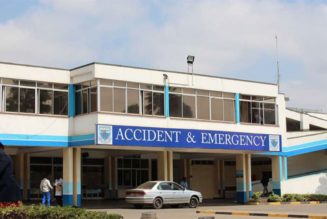Columnists
Firming up Africa in diagnostics
Wednesday October 04 2023

Early diagnosis is the route to better treatment outcomes. PHOTO | SHUTTERSTOCK
In May, the Resolution on Strengthening Diagnostics Capacity was officially adopted by the World Health Organization (WHO) at the World Health Assembly. This holds significant implications for Africa’s healthcare landscape.
The official Resolution document outlines it as “Recognising that diagnostic services are vital for the prevention, diagnosis, case management, monitoring and treatment of communicable, noncommunicable, neglected tropical and rare diseases, injuries and disabilities.”
This is a ground-breaking acknowledgement of the value of diagnostics in addressing public healthcare problems and the beginning of a long – but decidedly promising – road ahead.
Africa is home to 23 countries classified as LMICs (low-to-middle-income countries) which have a dual burden of communicable and non-communicable diseases.
There is rapid urbanisation in these countries, with significant numbers of people pouring into the NCDs risk pool each year. In 2021, only around half of Africa’s citizens (around 615 million people) had access to essential healthcare.
As we look back on World Heart Day, it bears mentioning that Africa, with its population of more than a billion people, is a significant contributor to the global burden of cardiovascular disease (CVD).
In 2019 alone, more than one million deaths occurred due to CVD in sub-Saharan Africa. That constituted 5.4 percent of all global CVD-related fatalities and 13 percent of all African deaths.
Imagine a 45-year-old Kenyan farmer — call her Jane— who tends her small plot of land to provide for her family. Jane cannot afford right examination and treatment due to poverty.
Stories like Jane’s are all-too-common in many African countries. Heart failure is a growing problem in sub-Saharan Africa. But the diagnosis of heart failure can pose significant challenges across the continent due to lack of access to appropriate diagnostics.
In Africa, cardiovascular diseases are the largest contributor to the noncommunicable disease burden. In sub-Saharan Africa, heart failure commonly affects younger age groups, often presenting in late stages with an exceptionally high mortality rate.
Prioritising early diagnosis is critical to creating better outcomes for patients like Jane – a mother, breadwinner and economically active member of her community.
Healthy populations are more economically active. No doubt, effective healthcare delivery can have a direct impact on gross domestic product.
Now, let’s imagine, in the context of the WHO Diagnostics Resolution, how we might change Jane’s healthcare journey.
A few countries have a national strategic plan for diagnostics, which hurts access for patients like Jane. The value of diagnostics is under-recognised, resulting in underfunding, inadequate diagnostics services, late diagnosis of serious conditions and inevitably higher mortality rates and higher treatment costs.
Establishing a national diagnostic strategy and adopting essential diagnostics lists will simultaneously increase access and reduce overall costs to the healthcare system.
With a national plan in place, the clinic Jane visits – her primary point of care – has access to essential diagnostics lists and a functional laboratory on-site, ensuring that she receives the necessary tests promptly.
Having been trained to do so, the healthcare provider empowers her with appropriate education and support, helping her understand the implications of her diagnosis and timely treatment.
The prioritisation of diagnostics at her first point of care provides her with early knowledge about her condition and facilitates timely interventions. To achieve this kind of outcome for more patients, strengthening laboratory systems and maximising current infrastructure is vital.
Poor laboratory infrastructure, limited human resources, a lack of equipment and poor quality assurance programmes severely limit access to diagnostics.
The next pillar is to invest in a sustainable workforce. Strengthening laboratory systems goes hand-in-hand with investing in laboratory professionals. There is a laboratory staffing shortage in both high-income countries and low-middle-income countries.
This creates a barrier to diagnostic services. Incidentally, approximately two-thirds of laboratory errors occur outside the facility – typically during the pre-analytic phase, for example, at the test sample collection point.
Adopting a regulatory framework that accelerates access is critical to creating synergy between the public and private sectors. Smart regulatory frameworks can accelerate access to safe and effective diagnostics.
Dr Pamba is the Executive Vice President, Diagnostics, Africa, at Roche Diagnostics.









